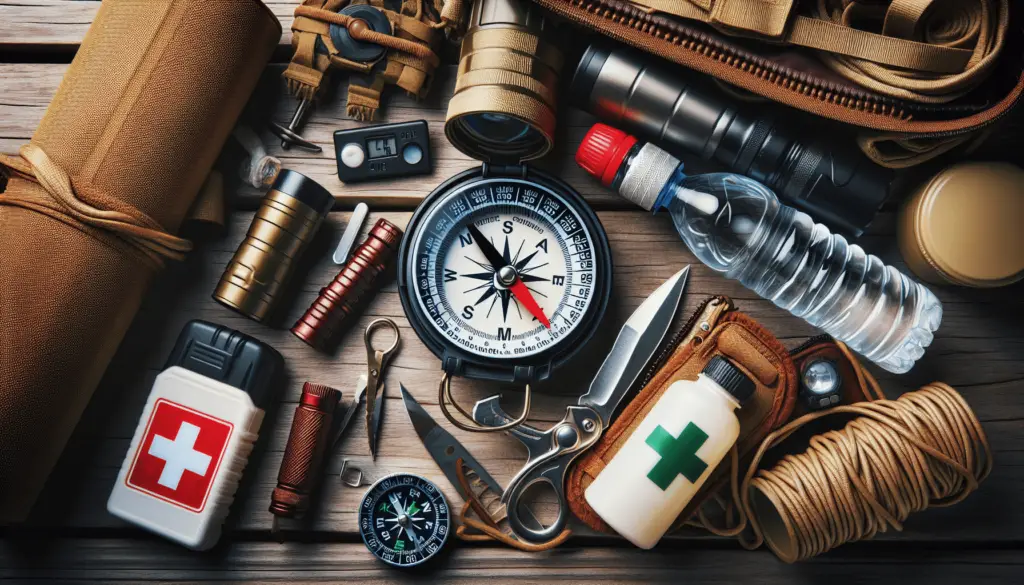Welcome to an eye-opening article that will debunk common survival myths and provide you with valuable knowledge on what not to do in an emergency situation. From using moss to find your way in the wilderness to sucking venom out of a snake bite, learn the truth behind these popular misconceptions to ensure your safety and survival. Let’s separate fact from fiction and equip you with the correct information to make informed decisions when faced with a crisis. Stay tuned for essential tips that could save your life.
Survival Myths Debunked: What Not To Do In An Emergency
Have you ever wondered if the survival tips you’ve heard might actually do more harm than good in an emergency situation? Today, we’re going to dive into some common survival myths and debunk them, so you know what not to do when faced with a crisis. It’s important to be prepared, but it’s equally important to know what strategies to avoid. Let’s get started!

Drinking Your Own Urine
You may have heard that drinking your own urine is a viable option for hydration in a survival situation, but this is a myth. While urine is sterile when it leaves the body, it quickly becomes a breeding ground for bacteria as it sits in the bladder. Consuming urine can actually dehydrate you further and introduce harmful bacteria into your system.
So, if you find yourself stranded without water, do not resort to drinking your own urine. Instead, focus on finding a safe water source or collecting rainwater if possible.
Sucking Out Snake Venom
In movies and television shows, you often see someone sucking snake venom out of a wound to save the victim’s life. However, this is not an effective or safe method of treating a snake bite. Do not attempt to suck out snake venom, as it can actually worsen the situation by introducing bacteria from your mouth into the wound.
If you or someone else is bitten by a snake, the best course of action is to remain as calm as possible, keep the affected limb immobilized, and seek medical help immediately.
Starting a Fire with Batteries and Steel Wool
While it is true that batteries and steel wool can create sparks when rubbed together, this method is not as straightforward as it seems when it comes to starting a fire in a survival situation. Do not rely solely on batteries and steel wool to start a fire, as you may not achieve the desired results quickly enough.
Instead, consider carrying waterproof matches or a lighter in your survival kit for a more reliable and efficient way to start a fire. Additionally, learning how to start a fire using natural materials such as twigs and kindling can also be a valuable skill to have in an emergency.

Eating Snow for Hydration
When you’re stranded in a snowy wilderness, you may be tempted to eat snow as a source of hydration. However, consuming snow directly can actually lower your body temperature and lead to hypothermia. Do not eat snow for hydration in a survival situation.
If you need to melt snow for drinking water, use a container to collect snow and then melt it over a fire. This way, you can ensure that you are consuming clean, safe water without risking further health complications.
Building a Shelter with Tree Branches
In a survival scenario, finding shelter is crucial for protecting yourself from the elements and maintaining your body temperature. While building a shelter with tree branches might seem like a good idea, it may not provide sufficient protection or insulation. Do not rely solely on tree branches for shelter in an emergency.
Instead, look for natural formations such as caves or rock overhangs that can provide better protection from the elements. If those are not available, consider using a tarp or emergency blanket to construct a more sturdy and weather-resistant shelter.
Making Noise to Scare Away Predators
If you find yourself in the wilderness and encounter a wild animal, your instinct might tell you to make loud noises or shout to scare it away. However, this can actually have the opposite effect and agitate the animal further. Do not make unnecessary loud noises or sudden movements when faced with a wild predator.
In the presence of a wild animal, stay calm and slowly back away without turning your back on it. Avoid direct eye contact and try to appear non-threatening until the animal loses interest and moves away. Keeping a safe distance and giving the animal space is key to avoiding a dangerous encounter.
Drinking Alcohol to Stay Warm
In cold weather conditions, you might think that drinking alcohol can help you stay warm by increasing your body temperature. While alcohol can create a feeling of warmth initially, it actually dilates blood vessels and can cause your body to lose heat more rapidly. Do not rely on alcohol for warmth in a survival situation.
Instead, focus on wearing proper layers of clothing, including insulating materials such as wool or synthetic fibers, to retain body heat. Building a fire and seeking shelter from the wind can also help you stay warm and comfortable when faced with cold weather.
Eating Plants and Berries Without Proper Identification
Foraging for plants and berries in the wild may seem like a good way to find food in a survival situation, but it can be dangerous if you are not able to properly identify edible species. Do not consume any plant or berry without first confirming its safety and edibility.
Carrying a guidebook or taking a wilderness survival course can help you familiarize yourself with local plant species and learn how to distinguish between edible and toxic varieties. When in doubt, it’s best to avoid consuming any wild plants or berries to prevent potential poisoning or illness.
Ignoring Minor Injuries
In an emergency situation, it’s easy to overlook minor injuries in favor of focusing on more immediate threats to your survival. However, failing to address minor wounds or injuries can lead to complications and infection down the line. Do not ignore minor injuries, no matter how insignificant they may seem at the time.
Carrying a basic first aid kit in your survival pack can help you clean and dress minor wounds to prevent infection. Taking the time to address and treat minor injuries promptly can make a significant difference in your overall well-being and ability to navigate through a crisis.
Stockpiling Large Quantities of Food
When preparing for a potential emergency or disaster, you might be tempted to stockpile large quantities of food to ensure you have an ample food supply. However, hoarding excessive amounts of food can lead to wastage and spoilage if not consumed in a timely manner. Do not stockpile more food than you can realistically use before it expires.
Instead, focus on building a well-rounded emergency food supply that includes non-perishable items with a long shelf life, such as canned goods, dry grains, and dehydrated foods. Rotate your food supplies regularly to ensure freshness and make use of items before they reach their expiration date.
Conclusion
By debunking these survival myths and learning what not to do in an emergency, you can better prepare yourself for unexpected situations and make informed decisions when faced with challenges. Remember to stay calm, assess your priorities, and prioritize safety above all else. Being equipped with accurate knowledge and practical skills can make a significant difference in your ability to navigate through emergencies and ensure your well-being. Stay safe, stay informed, and be prepared for whatever may come your way.
